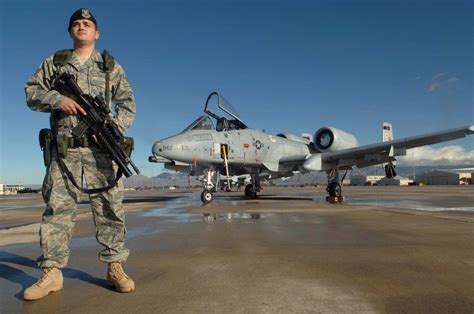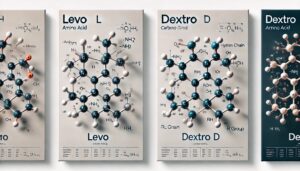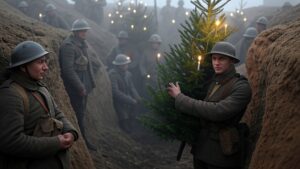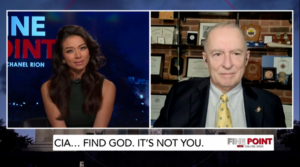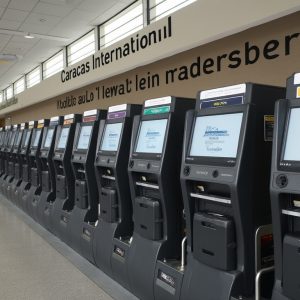
Jeemes L. Akers retired as a senior analyst from the Central Intelligence Agency in September 2013, with over fifteen years’ experience analyzing a broad array of Southeast Asian and Middle East security, terrorism, cyber and weapons’ proliferation issues. He has traveled extensively in Asia, Europe and Oceania, including deployments to several stations abroad, and has prepared analytical reports, briefings and in-depth studies for high-level Intelligence Community and White House policy makers and foreign partners on a variety of security-related issues.
Prior to his Agency experience, Mr. Akers worked for more than a decade as college professor and school administrator, practiced law, and managed a congressional election campaign. He served in the U.S. Air Force as a Chinese linguist and was awarded an Air Medal for his participation as crew member in combat sorties during the Vietnam War.
More recently, Mr. Akers spent several years as a visiting professor at the College of the Ozarks teaching courses including Terrorism and Criminal Justice, History of the Modern Middle East, History of Modern China, History of Modern Russia, History of Modern Germany, and a Legal History of the United States.
When not teaching at CofO, Mr. Akers continues work on a three-novel series and his artwork.
War Heroes and Disrespect
by Jeems Akers
RAY, AL AND MOM’S RESTAURANT
“When writing a novel a writer should create living people; people not characters. A character is a caricature.”
Ernest Hemingway
All of us who participated in the Vietnam War were changed in some way: some much more than others.
This week I took mom and dad to Mom’s Restaurant in Ohio. The restaurant is located very close to my parent’s home and is a family favorite for breakfast, especially the biscuits and gravy. This is Mom’s second location: the first was in a nearby town. I had my first restaurant cooked hamburger there—I’ve been a huge fan of Mom’s ever since.
Mom (Hilda) is a Kentucky girl and the restaurant walls are covered with photos of the University of Kentucky (Big Blue) memorabilia of all shapes, sizes and descriptions. During the NCAA basketball tournament, she serves Kentucky blue gravy with the biscuits. The UK walls include pictures of Mom with famous Cats’ players and coaches.
The big table in the middle of the restaurant is a special place reserved for Mom’s closest circle of friends: a place where coffee flows almost as fast as the gossip, with pancakes nearly as big as fishermen’s lies, a practice field where local politicians (past and future) fine tune their wares, and where a safe zone exists for military retirees to exaggerate their war exploits.
This Saturday (today) is my mom’s 91st birthday. Mom (Hilda) cleared the big table of local coffee drinkers so we could recognize my mom on her special occasion. Quite an honor. The location was my mom’s choice. That will come as no surprise to those of you who know her. Mom (Hilda) even ordered my mother a special butterscotch pie—my mom’s favorite—with “Happy Birthday Ruth” browned into the meringue.
We almost cancelled the outing.
Yesterday, my dad slumped over and was totally unresponsive while in the bathroom. He celebrates his 93rd birthday Wednesday. We called 911 and the local Rescue Team showed up. Nice guys. He is in a nearby hospital Emergency Room as I write. All medical tests are normal. We are optimistic he can come back home this afternoon.
I spent a while last night sitting with dad.
COVID-19 regulations allow only one of us to be with him at a time.
Dad remembers nothing about what has happened to him. I had to tell him twice what hospital he was in.
Sigh.
Old age is like a slow-motion glacier drip.
Drip. Drip.
Can you hear it?
One of the individuals with a daily invitation to Mom’s hall-of-fame table is Ray S. Mom (Hilda) motioned for me to come over to her table earlier this week to meet him. I was wearing my Vietnam Veteran/Air Force cap. Ray likewise is a Vietnam-era vet. He also served in the USAF. He started his military career as a “Ditty Bopper” (Morse Code interceptor) and finished as a C-5 loadmaster. He shared a CD with me after we talked about mutual friends, experiences and military assignments. Early in his career, he spent time at Misawa AFB: my time there was limited to my participation in a military Far East softball tournament.
At any rate, Ray played an important role in one of the most interesting—if not tragic—stories associated with our military experience in Vietnam. In the final days of the war, as the South Vietnamese President resigned and North Vietnamese troops began storming the outskirts of Saigon, then-USPOTUS Gerald Ford ordered the Air Force to transport young dependents and orphans out of the collapsing country. This mass evacuation of some 3,300 infants and children was called “Operation Babylift.”
In the late afternoon of April 4, 1975, a USAF C-5A Galaxy (68-0218) began the Operation by taking off from Tan Son Nhut Airport. Ray was a crew member on the flight and helped settle the children and workers into their places. The infants were on the upper deck, youngsters and teenagers below. The C-5 had to climb steeply to avoid hostile ground fire. Twelve minutes after takeoff, several of the numerous locks on the huge rear cargo door failed, with the door exploding into the sky and ripping apart the lower fuselage. A rapid decompression followed.
Can you imagine?
Since it was a military transport, there was a shortage of oxygen masks. In the confusion of fog, noise and flying debris, babies and youngsters were screaming. In the cabin, the pilot ordered Ray to go below and check out the damage. Ray observed severed hydraulic lines dripping fluid and dangling cables. The hydraulic lines and control and trim cables essential to operating the plane’s aileron and wing spoilers were inoperable. The crew struggled to get the plane under a controlled descent (so the plane’s occupants could breathe). But when the captain pushed down on the controls, the plane kept descending. He couldn’t pull up. Quick thinking in the cabin (using a combination of throttle, one working aileron and partial wing spoilers), allowed a troubled descent to 4,000 feet as the plane struggled to return to base. But they couldn’t make the runway. The aircraft touched down in a rice paddy, skidded briefly then became airborne again for a short period before slamming into an earthen dike. The C-5 broke into parts and caught fire.
138 people were killed in the crash, including 78 children and 35 DAO and other Embassy personnel.
Ray told me that investigators told him later that the relative youth of the pilot and co-pilot actually contributed to the quick thinking that saved many lives (if an older pilot would have been in the cockpit, they surmised, they would have repeatedly gone through emergency procedure protocols until it was too late: the younger pilots quickly rejected those measures and tried innovative approaches to the emergency.)
As a crew survivor, Ray helped evacuate the living babies and infants from the broken and smoking fuselage. Air America and South Vietnamese helicopters quickly arrived. (According to Ray, a couple of the Air America pilots were stone drunk. That doesn’t surprise me. Nor should it come as a surprise that such facts were omitted from the official post-mortem of the tragedy).
All the kids and adults in the lower section of the aircraft died—that portion of the plane was sheared off by impact with the ground.
Think of it: the crash of one of the largest aircraft in the world, billowing toxic black smoke plumes hovering over the rescue scene, scores of children screaming in fear, the almost immediate arrival of mass numbers of Vietnamese locals and looters who stripped the crash site of any item they considered of potential value; all amid the backdrop of a collapsing country and the approaching North Vietnamese troops—I cannot imagine a worse set of circumstances.
I’m sure it looked and sounded like a scene from Dante’s Inferno.
The cause of the crash: a subsequent investigation showed that mismatched parts had contributed to the failure of the locks on the cargo door. At the time, there were about 100 C-5’s in almost constant wartime service. Spare parts were at a premium. The USAF had developed a practice of “cannibalizing” the older aircraft to get spare parts for the C-5 operational fleet. In this particular case, the parts used to replace important parts of the lock apparatus weren’t a perfect fit. The failure of some of the locks meant the others couldn’t hold.
My best high school friend, Al Stapleton, doesn’t eat at Mom’s Restaurant all that much. He is more of a loner these days. Al is also a Vietnam veteran. He also enlisted in the USAF. He was on his way to Cam Ranh Bay, South Vietnam aboard a military-contracted DC-8 jetliner on November 27, 1970. The aircraft crashed at the end of the icy runway in a fireball after a refueling stop in Anchorage, Alaska. The aircraft broke into three parts nearly three-quarters of a mile from the runway’s end. Of the 229 passengers, 46 died in the flames (45 military personnel and one stewardess).
Al told me that a subsequent investigation revealed that—for some reason—the aircraft’s parking brake was left on. All the tires blew out. Al could see one of the engines on fire as the plane roared down the runway.
He knew they were in trouble.
The pilot tried to abort the take-off.
But it was too late.
Al was one of the survivors of the crash. All the passengers seated in the rows behind him died. His seat was hurtled clear of the airframe by the force of the crash and explosion. He remembers the flames, struggling to free himself from the seatbelt, helping someone else get out of his seat belt and putting out the flaming uniform of another soldier with his hands.
He doesn’t know their names.
Al refuses to fly again.
Understandably.
This week was the first time—in all these years—that Al shared some of the details of that fateful day with me.
I have never asked.
Al was transported to the premier military burn treatment center in the country—Brookes Army Medical Center in San Antonio, Texas. He was in recovery for over six weeks. They didn’t have artificial skin to treat burns back then. Instead, patches of pig skin were grafted on burn areas with the hope that normal skin cells would attach themselves to the patches and grow normally. During those weeks of painful recovery, Al came and visited me at Lackland AFB in San Antonio where I was in basic training.
I’ll never forget that.
Al was the kind of friend every high school teenager should have. We were inseparable. If I wasn’t at my house, I could be found at Al’s. We survived several automobile crashes and close calls over the years. (There was a hill on one of the roads near town where Al would gun his father’s station wagon to the point we became airborne: great fun until one night when the drive shaft collapsed due to the impact of the landing and we suddenly went from warp speed to zero—we all had to walk back to town like puppies with our tails tucked between our legs).
Al was the kind of friend with whom you went to a scout jamboree and played poker in the tent while the other troops worked diligently on their merit badges.
So many memories!
One night, while Al was driving his dad’s car, I sat in the passenger’s seat in front (there were no seat belts in those days). We were throwing cherry bombs and M-80s out the window (or placing them in mailboxes). Four of our friends were packed in the back seat. One of the wicks pulled out of a cherry bomb. “Watch this,” I yelled at Al (there was no air conditioning so we had the windows rolled down). I lit the wick and tossed it in the back seat. Chaos ensued. Those in the back didn’t think that was nearly as funny as Al and I did.
It was a time of innocence. We all haltingly grew into our sexual maturity at drive-in movies. Color TV was just coming into its own. No cellphones. No computers. No social media. No opioid epidemic. No COVID-19. No orchestrated effort to force LGBTQIA crap down our throats.
Everyone knew life was sacred.
Sigh.
I feel so sorry for my grandchildren.
In those days, everyone listened to AM radio. Vinyl 45 rpm records became as good as currency to exchange. It was also the time of the British invasion. In our small-town subdivision, all of us had our favorite groups: one collected the Beatles, another the Rolling Stones. My group was the Dave Clark Five (the song Glad All Over was the first to break the Beatles’ stranglehold). Al was a fan of the Searchers. To this day Needles and Pins remains one of my favorite songs from that era.
Ah, such memories.
To prove our macho, I climbed bridges with Al; we planted a Christmas tree in our yard (dad was in a back brace from playing basketball); we puked together during blazing hot summer high school football two-a-day practice sessions; I fell off Al’s family horse on my initial effort to play cowboy; and, we watched as the loser at poker had to run around the house naked (in the snow).
And that is only a sampler of the stories I could tell.
Al and I have shared both tears and incredible bouts of laughter over the years.
To me, it is absolutely incredible that two of my friends—one new and one old—walked away from fiery air crashes during the Vietnam era. What are the odds? In an age when pro athletes and so many others completely disrespect the flag of our nation, it is a privilege to know personally two true American heroes.
